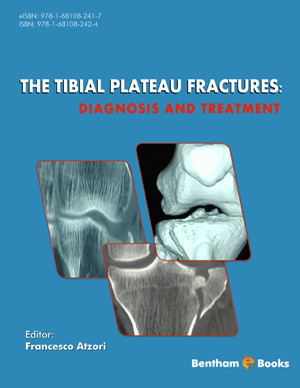Abstract
The tibial plateau fractures classification is very important for the clinical prognosis and to plan time and needs for surgery; however, the features of this type of lesion are various, and many classification systems were developed to describe variables that contribute to lesion pattern. It is also important the evaluation of soft tissues that are often involved (compartimental syndrome, exposition), associated knee injuries (meniscal or ligamentous), and general health condition in poly-traumatized patients. The AO/OTA fracture classification system is used by The Orthopaedic Trauma Association as for other fractures. Many surgeons prefer the classification described by Schatzker et al. because it is simpler and more familiar. Despite that there is limited inter and intraobserver reliability for Schatzker and AO classifications; future classification systems or revisions of the previous ones will have to consider axial imaging to describe in a better way the fracture patterns.
Keywords: AO classification, Schatzker classification, Tibial plateau fractures classification, Schatzker classification, Tibial plateau anatomy.






















